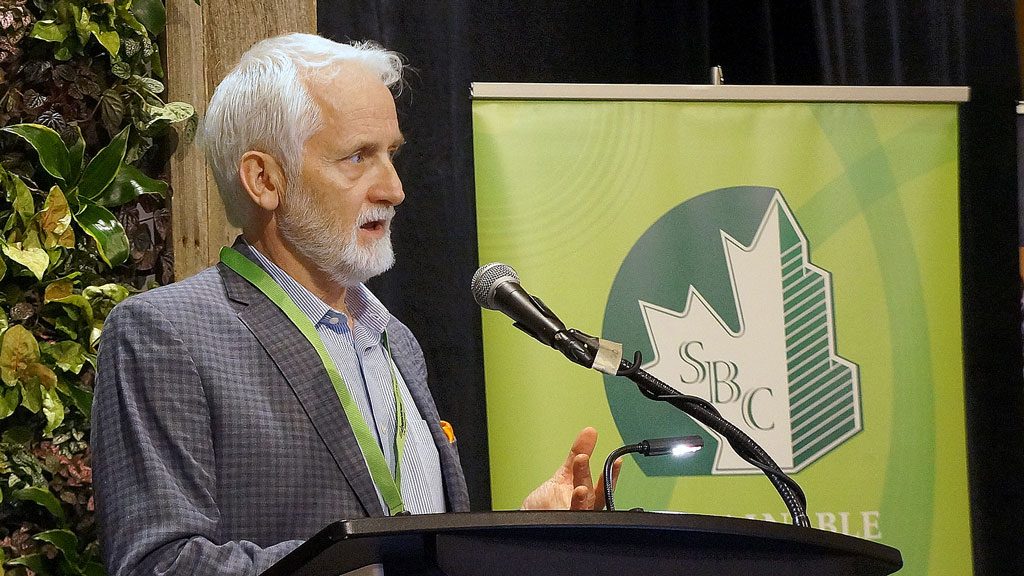Net-zero carbon emissions are achievable and they should be pursued with every development, according to the president of an Ottawa-based performance engineering firm.
Robin Hutcheson, president of Arborus Consulting, speaks from experience, having spent 15 years working on energy efficiency, green buildings and renewable energy projects.
So when he was approached by an affordable housing developer in Ottawa planning an ambitious carbon neutral urban infill project, called the Ottawa Carbon Neutral District, he jumped at the opportunity.
“We thought this was unique on so many fronts,” he told a seminar audience at Sustainable Buildings Canada’s Healthy Buildings, Healthy Planet conference in Toronto recently.
“This is going to be an affordable housing, net-zero carbon district, hopefully.”
But Arborus went into the project with little more than a site plan identifying uses such as affordable housing, market housing, a school, recreational facilities, retail and commercial elements.
Arborus did solar exposure analysis, shade studies and measured the impact of the heat island. The firm built a net-zero carbon energy balance tool to make calculations for the district and it organized a forum for integrated design with the development group.
Hutcheson told delegates that “the absoluteness of net-zero is really not important.” Important is “the process of eliminating waste from your buildings and finding opportunities to share resources to capture waste streams…and capitalize on them by reusing them.”
He said if the district installed code buildings and traditional energy systems, more square footage than the site offers would be required to meet a carbon neutral goal. Space reductions in his plan come from a ground source heat pump system and Passive House design systems.
We need the electricity sector grid to get on side if we are going to hit net-zero
— Scott Rouse
Energy@Work Inc.
Speaking on the realities of targeting net-zero goals at the conference, Scott Rouse told delegates it is “a real challenge” with existing buildings but it can be a practical objective.
What’s the impetus for a building owner? When occupancy rates, rents, tenant renewals and other key metrics are evaluated, “green buildings do better,” said Rouse, a managing partner at Energy@Work Inc., an energy management company.
He said the success of a building retrofit should be measured by energy performance in kilowatt hours per square foot, but more often a percentage of energy savings over the original building’s energy costs is the benchmark.
The business case for setting net-zero goals is what Rouse calls “the triple bottom line”: prosperity, energy performance and social responsibility.
Rouse’s firm identified 30 barriers to buildings achieving net-zero. One of the most troubling ones is apathy, he told a packed seminar at the Marriott Downtown in Toronto. Owners might overcome it because net-zero is not just about energy efficiency; it is also about improved occupancy comfort.
Rouse said an energy management program that has the support of top management and is done with accounting and operations departments collaborating is important. It should also include real time monitoring systems that connect buildings to occupancy needs.
His company practices what it preaches. With an energy management plan in place, Energy@Work saw an 11 per cent reduction of energy use without capital input in its first year at its downtown Toronto offices. Furthermore, he expects the building owner will get a seven-month payback from the installation of a building automation system to control rooftop units.
He said while many technologies have made advancement leaps, the electricity grid hasn’t changed much in the last 100 years.
“We need the electricity sector grid to get on side if we are going to hit net-zero,” he said.











Recent Comments